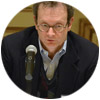 In the academic year 2015-2016, we welcomed James Coddington as our fifth Institute of Fine Arts Honorary Fellow. James Coddington is the Agnes Gund Chief Conservator at the Museum of Modern Art in New York City. Institute conservation student Megan Randall recently interviewed Mr. Coddington during her fourth-year internship at MoMA.
In the academic year 2015-2016, we welcomed James Coddington as our fifth Institute of Fine Arts Honorary Fellow. James Coddington is the Agnes Gund Chief Conservator at the Museum of Modern Art in New York City. Institute conservation student Megan Randall recently interviewed Mr. Coddington during her fourth-year internship at MoMA.
Prior to coming to MoMA, I read the 2010 Wall Street Journal article on your weekly games of squash. I am curious if you think playing squash may or may not be informative in your career.
[Laughs] That’s an interesting question. That article captures one of the great ironies for me about people doing things well and not getting recognition for it. I would wager more people in the world, as a result of that article, have read about my squash playing than the best squash players in the world…they’re phenomenal athletes, but they don’t have the sort of position that affords them this level of exposure.
It relates to what conservators do, too, in that we really don’t seek recognition for our professional successes. It’s an old trope but one that I subscribe to, that if nobody knows we have been there then we have done our job.
Specifically in the article, you talk about squash being related to chess, and I was wondering if you employ the mental and strategic aspects of the game on a daily basis?
I suppose so. I like to think I play a patient game of squash, and certainly one needs to be patient as a conservator. The scales at which things happen are vastly different, we are talking about matters of seconds versus matters of weeks and months, but still, within the context of the task at hand, patience is absolutely useful in both.
Squash is a hell of a lot of fun and I do believe firmly in that Greek concept of ‘sound body and sound mind’.
You came into the museum in 1987. Can you walk me through your path at the museum?
When I came to MoMA we were a much smaller department. At the time, Antoinette King was the director of conservation. There were 2- ½ paintings conservators, 1-½ sculpture conservators, 2 paper conservators, a Mellon Fellow, and an administrative assistant. Everybody was busy, but it just was not frantic the way it is now.
Was the work in the lab exhibition and loan driven or was it more research based? Has there been a shift in the lab?
The shift has been from treatment-based work to exhibition and research-based work. Our main connection to the collection at that time was treating it. That remains pretty fundamental, but a lot of our connection to the collection now is through exhibition driven research.
Is there a treatment or artist on which you have worked that stands out as particularly challenging or rewarding?
Circumstances and personal interests have directed my attention toward Jackson Pollock. It began with Kirk Varnedoe’s 1998 retrospective, when Kirk said that many stories had been told about Jackson Pollock, but one that had not (at least to that point) was “How did he do this? How did he make these things?” Kirk was really dedicated to making those questions an essential part of the exhibition. That opened the door to Pollock for me, and in the 15+ years after that, a number of opportunities have risen to keep my attention on Pollock, most recently the three major Pollock paintings Jennifer Hickey ‘11 and I worked on a few years back.
Have your goals and interests changed significantly from your entry into the museum in 1987—specifically, as your role has changed from conservator to chief conservator? Has that transition given you a different perspective on the field of conservation?
It certainly has given me a different perspective on the field, because it has given me different responsibilities here in the museum. As a representative of our field, I am exposed to some things I would not be otherwise. My goals have not changed, they are the same: care for the collection in the best possible way.
In terms of going from conservator to chief conservator, being the chief conservator at MoMA gives me opportunities that others do not get. I accept that and try to respond responsibly for our field from this position.
Is there anything that has surprised you during your career in terms of trends in the field?
As a painting conservator, what I think I know about paintings conservation was largely learned during my time at the Met under John Brealey and his studio. That was absolutely a flex point in paintings conservation as a whole and certainly in this country. John and the Met were pretty much ground zero, so it was really interesting and deeply formative.
For instance, John was vocal about the subjectivity of cleaning paintings. He would articulate the subtle differences between an objective cleaning and his approach to subjective cleaning. John established a science department there with the specific mandate to develop a longer-lasting, aesthetically satisfying varnish. Paintings would be out of the cleaning cycle for much longer periods of time. While there was this recognition of subjectivity, he also recognized that there were objective ways to mitigate the problem. That has always been a very healthy mode of analysis of situations for me. In caring for the collection here at MoMA, there are certain things we do and need to take responsibility for, but are there ways that we can learn and think about how to resolve problems in a more objective and useful way going forward.
I have noticed that you are working on the 1914 Pablo Picasso “Green Still Life.” Can you tell me about that treatment?
This ties together nicely. It is a straightforward varnish removal (synthetic resin), but why take it off? Why should I expose the painting to solvents? The reason is that it’s actually a dead matte varnish on there. Interestingly, there was a period of time, in the early 1980s, when controversy surrounded the cleaning of Cubist paintings, the “Crimes Against the Cubists”, it was then understood that a Cubist painting should be matte. I believe that is why the matte varnish was put on, but the question is considerably more subtle than that. Every painting is different, and to say that all paintings of one stripe or another should be matte probably misreads some of those paintings, maybe many, if not all of them. This dead matte varnish was masking essential qualities of the painting, and because it can be taken off easily with no risk to the underlying paints I am doing that. Once removed, I will be able to see if this painting is actually about the differences of matte and gloss, and then either clean further to bring those differences out, or understand more about the materials. One of the specific questions here is what is underneath. The revealed paint is quite glossy. Is that mostly a function of the residual earlier varnishes that are on there or is it a desired function of the paints that Picasso used? Not until I can get that matte varnish off can we start to talk about the global questions concerning the painting.
Talk about your current research at the museum.
For years I’ve been interested in documentation and imaging documentation. During my tenure at the Met, a fair amount of time was spent talking about differential changes in the colors in a painting over time. MoMA’s collection is a young one and many things come here essentially unchanged. Rather than have a discussion years from now on ‘how much has it changed?’ can we develop documentation procedures that will say ‘it has changed this much’. Then, future conservators can be talking about a narrower range of differences, and they will have better information to more responsibly restore that piece to something closer to what it originally was. Being able to document the color of something to a higher degree than what was previously possible has been something we’ve worked on for a long time. To that end, we’ve worked with the Rochester Institute of Technology to help them develop the Sinar Color to Match camera, a six-channel color capture system.
Any predictions for the future in conservation?
Documentation is taking up a substantial amount of a conservator’s time these days. Contemporary art, for example, raised the potential for far more documentation. Having the artist available increases the amount of documentation, and the complexity of what many artists are doing increases the need for more documentation. That complexity also leads to a much greater uncertainty concerning appropriate treatments. My motivation for a better color capture system was about contemporary art. It is in a state that if we could capture the color better, everyone in the future would be better off for it. The other thing driving this increased time devoted to documentation is technology. There is more technology that is readily available. We can point and shoot more instruments at things now and we need to collect that information.
What technologies do you see on the horizon to make a big impact in our documentation?
Are we properly preserving the documentation? We have all of this information, are we truly methodical and systematic in the saving of that information? I cannot tell you how essential it is, having a conservation department here for 50 years, that we can see the written documentation of the people who went before us. It is an enormous benefit to us as we treat works now. If the information we have is not readily accessible to the future conservators, either due to technological obsolescence or its location is lost, it is really handicapping future conservators rather than helping them.
What kind of focuses do you think are essential for preparation in the field?
I think a real problem is that there are more and more demands on conservators, especially in museums. There is a lot of time spent telling people about what we do now. Go to any museum website and you’ll see the increased amount of material that gets published, in their journals and elsewhere. Having to put our thoughts down in an orderly and comprehensible way is something that is more and more expected of us. Similarly, I do feel like there is a real need, again of museum conservators, to have a really solid grounding in art history. This is a nice pitch to the IFA, but I really believe it. It is something that I would not have been nearly as strong about 10 years ago.
What prompted that change?
Our increased collaboration with art historians. They come to us to learn our language, but I do not see the opposite happening as much. I could be wrong in that, but I think that it should happen. It would be more productive in every way.
The final thing I see as an issue for training is what are we going to do about technology-based works of art. I think that for technology-based works of art, students are going to need some additional training, like an extra year of school, or take additional coursework in information sciences, video technology, and introductory stuff like that. I think art historians will be learning to code, and conservators will need to learn to code, too. I don’t think that will be a surprising thought in five years.
Can you talk about your thesis project at Reed? The effects of nitrates on Daphnia?
Daphnia are water fleas. I was a biology major at Reed. It really is interesting to me because failure is one of the great things to learn. The thesis was, in my estimation, a well thought-out project. It was poorly executed for many reasons: I was no longer interested in the project because by that time I was interested in art history, my advisors were not interested in it, and I did not get particularly good direction. I worked my way through it and did it, but it was all the evidence I needed, the final nail in the coffin, that I was not going to be a biologist.
The premise of the thesis was that nitrates from fertilizers run off and cause algae blooms. The algae blooms suffocate all the wildlife and fauna in the water. My question was, is the fauna being suffocated just because the algae is eating up the nitrate, or is it because the natural predator of the algae is suppressed during the bloom. Daphnia is one of the natural predators of algae. The evidence was inconclusive.
You graduated from college in 1974 and started at University of Delaware in 1978. Can you give me some more background into how you started in conservation?
I already knew I was interested in conservation before I left Reed, due to having a couple of outstanding art history professors. They knew about the field and my interest in art history and biology. They didn’t direct me towards it, but they included that material in their courses, and when I made that connection myself they gave me a lot of support. As with everybody, even back then you needed additional coursework. I was taking studio art and some chemistry during that time and living a great life in Portland, Oregon.
What advice would you give a soon-to-be graduate?
[Laughs] The work is its own reward.

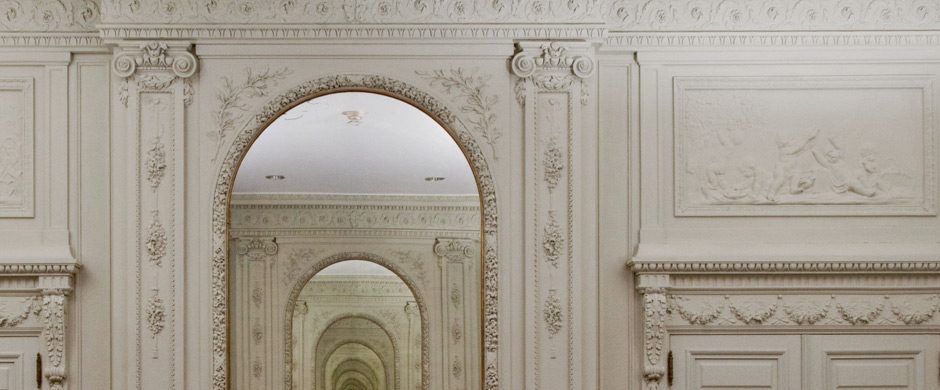
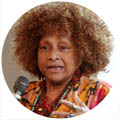

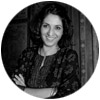
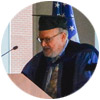 In 2014-2015 we welcomed our fourth
honorary fellow
In 2014-2015 we welcomed our fourth
honorary fellow 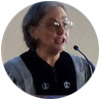 In 2013-2014, we welcomed our third Honorary Fellow
In 2013-2014, we welcomed our third Honorary Fellow 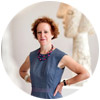 In 2012-2013, we welcomed our second Honorary Fellow
In 2012-2013, we welcomed our second Honorary Fellow 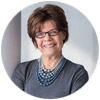 In the academic year 2011-2012, we welcomed our inaugural Honorary Fellow,
In the academic year 2011-2012, we welcomed our inaugural Honorary Fellow, 


